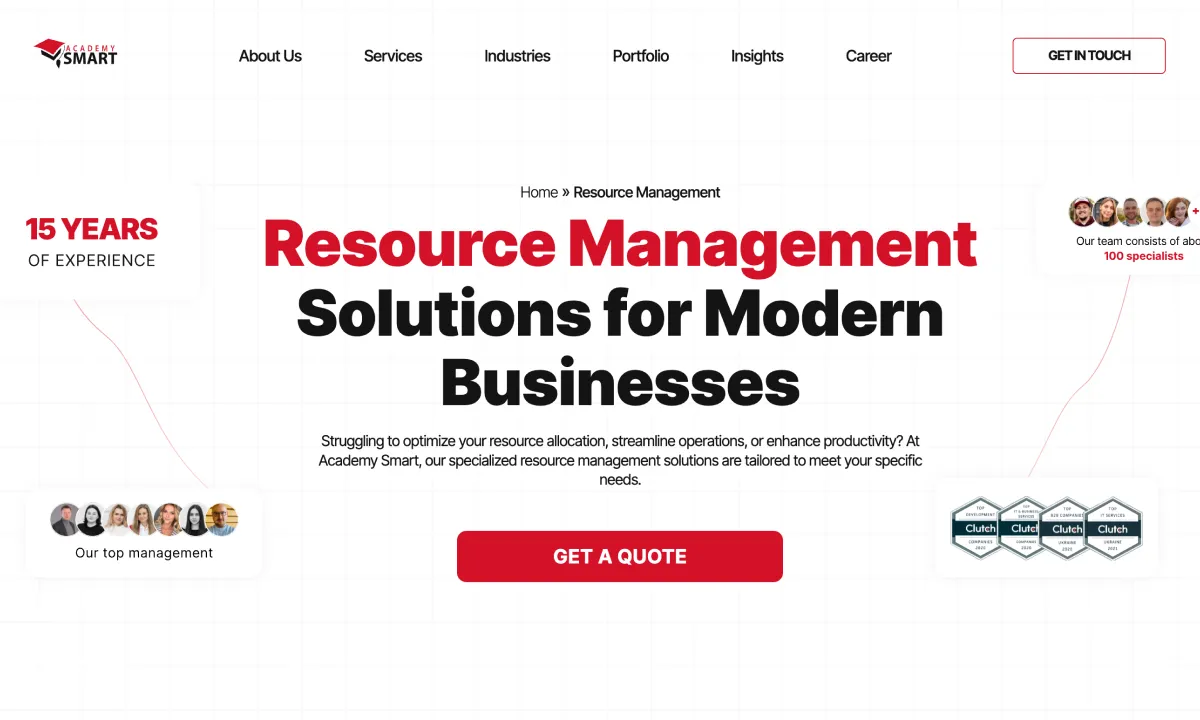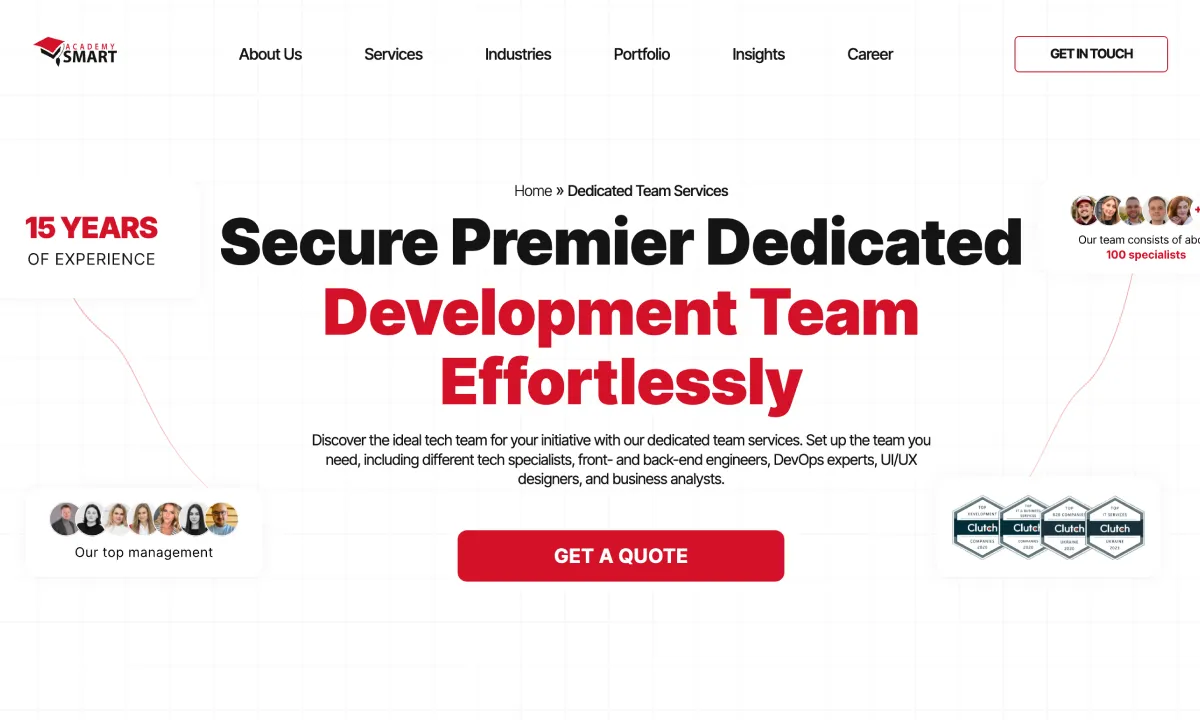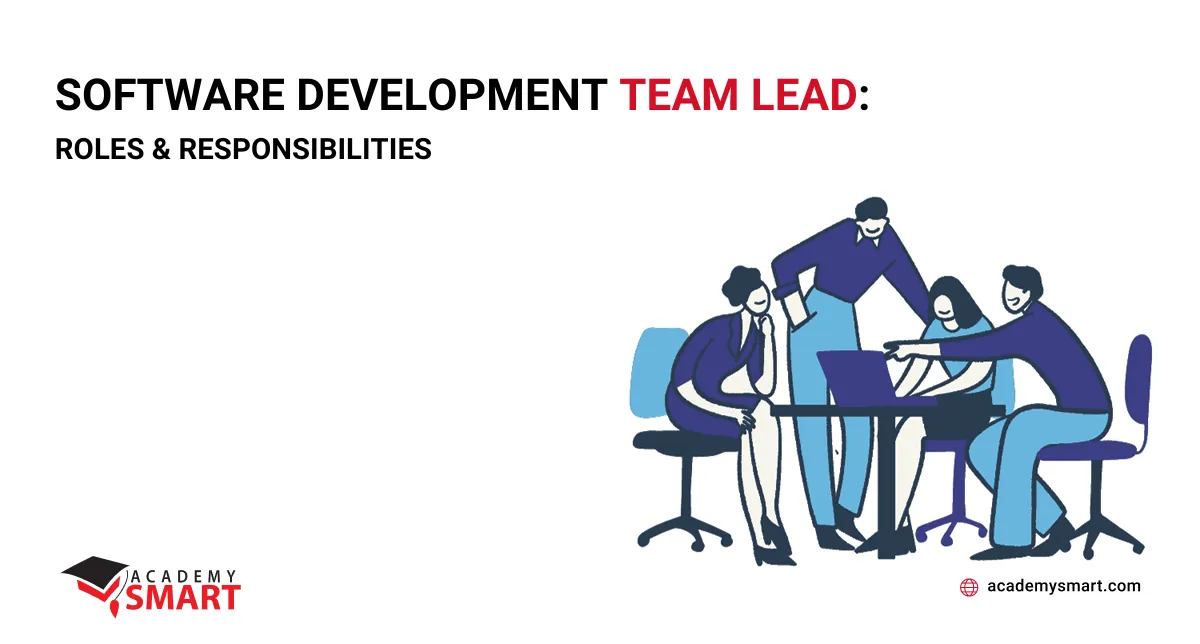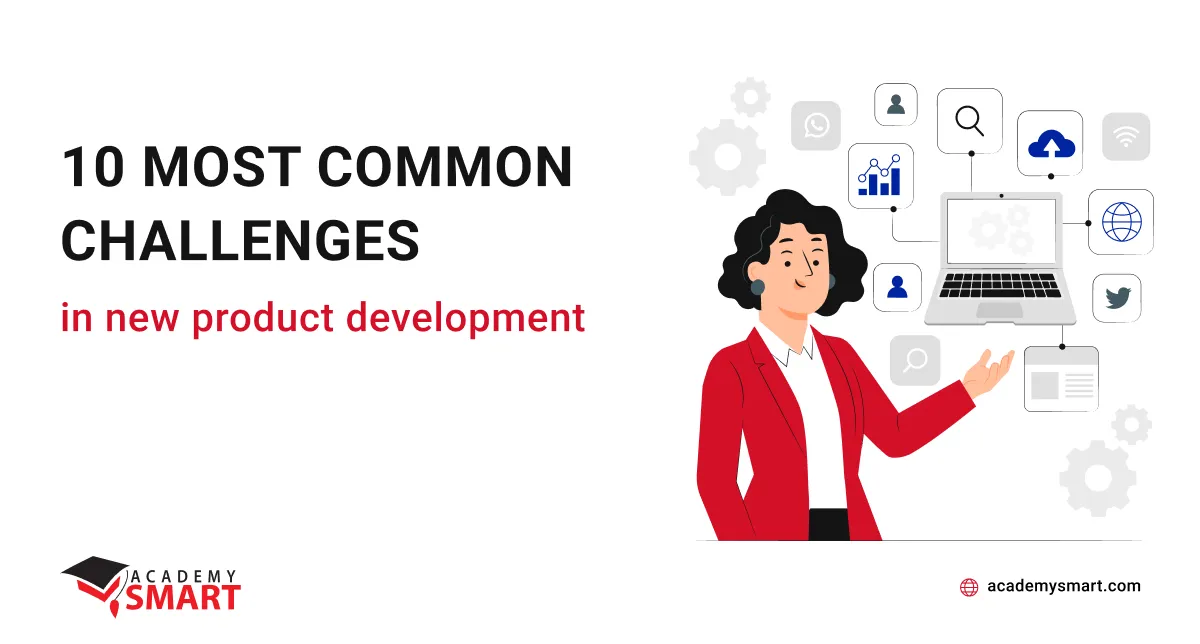
How to find a job in IT today
Contents
While technology permeates every aspect of modern life, the IT industry may provide many career opportunities. Despite the unfolding recession, the information technology industry remains the locomotive of economic development since digitization processes require the massive implementation of modern technical solutions and specialists capable of doing it. Moreover, flexible work arrangements, high usefulness, competitive salaries, constant innovation, and dynamic roles are other reasons that make starting a career in IT beneficial.
This article aims to guide you on how to find a job in IT and highlight the steps you need to take to make this dream come true. And before we start diving into the topic, be inspired by the engineering beauty of the software applications that Academy Smart’s team has created.
How to get a job in IT: 8 steps
Mastering an IT career is a challenge that requires dedication, perseverance, discipline, and lots of practice. Entering the industry is a lengthy undertaking, so you will also need patience, self-control, and the ability to analyze previous failures to find an effective solution.
Avoid thinking ahead of time about competition in the market; instead, focus on the skills that will make you a professional. Hone them daily, immersing yourself in the essence of the current task as much as possible, and you will reach a level at which your relevance as an expert will become evident.
Step 1. Define the area of your interests and opportunities
A career in IT is an exciting journey that begins with an essential first step: defining your area of interest and opportunities. To succeed in this ever-evolving field, you must confront yourself honestly and ask relevant questions to clarify your goals, strengths, and preferences.
Start by identifying your career aspirations, academic background, and existing skill set. Reflect on your domain interests and assess where your passion lies. Understanding these aspects will help you make informed decisions and pave the way for your future career path in IT.
You have to find what duties resonate with you most: software development, testing, system administration, web or mobile application creation, cloud systems, or cybersecurity. Be sure to look for an area that inspires you and encourages professional growth. Otherwise, you will not be able to cope with the high pace of the industry and its high demands for skills-growing and initiative.
Personal possibilities play a significant role in choosing expertise within IT. Take stock of your strengths, passions, and aptitudes. This self-awareness will enable you to identify the right stacks and programming languages to focus on during your learning. Remember that each of them has unique applications and use cases, so align your choices with your interests and career aspirations.
Knowing the space within the industry is equally crucial. IT has its specificities of workflow, workload, and schedule. It often demands adaptability and continuous learning to stay up-to-date with the rapidly evolving technologies. Emphasize the importance of being open to new challenges and staying curious to thrive in this dynamic environment. You must be ready to work remotely, constantly communicating with the customers and your team members. Moreover, you will have various collaboration experiences.
Be realistic, not expecting to land your dream job in a global multinational enterprise immediately unless your coding skills are phenomenal. You will likely start your journey in a small IT company, doing routine development tasks on outsourcing or outstaffing. Be prepared to appreciate the experience you will gain, listen carefully to more experienced employees, and learn from best practices. Take the time to research and acquaint yourself with the various IT job roles and their corresponding responsibilities you may meet. Numerous resources, such as YouTube channels, podcasts, discussion websites, and blogs provide insights into IT work. This research will help you identify jobs aligning with your lifestyle and personal preferences.
Additionally, staying informed about current IT trends is crucial. Technology is changeable, and being aware of emerging trends and advancements can impact your decision-making process. Research the latest developments in data science, artificial intelligence, virtual reality, cloud computing, and the Internet of Things. These trends can shape the future of the IT profession and open up exciting opportunities.
Summing up, honest self-assessment, research, and a passion for self-education may set you on the path to becoming a valued professional in the dynamic and rewarding world of information technology.
Step 2. Make the list of required technical knowledge and skills
Having defined your area of interest and identified the IT domain you want to pursue, the next crucial step is to create a comprehensive catalog of the technical knowledge and skills required to excel in your chosen field. It will make you better equipped to get the right learning opportunities. Remember that investing time and effort in acquiring relevant skills is crucial to find a job in IT.
To begin, research the specificity, requirements, and trends within the IT industry related to your chosen domain. Examine the job market, industry reports, and expert insights to gain valuable information about the skills in high demand and those that are becoming essential for IT professionals in this case.
For example, if you are interested in pursuing a career in software development, you should define the technical skills required for this area. That might include learning programming languages like Python, Java, or JavaScript and familiarizing yourself with various frameworks and tools used in software development projects. Similarly, if you aspire to enter cybersecurity, you should gain knowledge of network security, ethical hacking and understanding concepts related to encryption and firewalls.
As you explore your IT domain, look through multiple job listings to identify the specific skills employers seek. Job descriptions often provide valuable insights into the technical expertise required for each role. Analyze these requirements to create a customized roadmap for your career in IT.
Step 3. Learn and gain hands-on experience
Now, when you clearly understand your purposes, it’s time to start learning and get experience in practice. This phase is essential for honing your skills, validating your knowledge, and building a solid foundation for your IT career.
To begin, consider enrolling in online courses, tutorials, or coding boot camps relevant to your chosen area of expertise. These resources offer structured learning and practical guidance, allowing you to acquire the necessary knowledge effectively. Look for reputable platforms that provide hands-on projects and real-world scenarios to ensure a comprehensive learning experience.
As you progress in your learning journey, don’t limit yourself to theoretical knowledge alone. Keep in mind the significance of practical experience, which can be gained through personal projects and contributions to open-source initiatives. Building various minor and major projects based on your tech domain will provide you with exposure to specific tools and technologies and enhance your problem-solving abilities. Participating in coding challenges, hackathons, and open-source involvement will strengthen your skills and demonstrate your commitment to continuous improvement.
Validation of your skills is crucial in today’s competitive job market. One practical approach is to pursue certifications that are recognized in your IT domain. Certificates provide a credential that showcases your abilities and expertise to potential employers. Consider obtaining certifications such as Google Certified Professional Cloud Architect for cloud-related roles or CCNP Enterprise for networking disciplines. These documents validate your knowledge and add significant value to your resume.
While pursuing certifications, don’t forget the importance of gaining hands-on experience. Seek internships, freelancing opportunities, or volunteer work in the IT field. These experiences allow you to apply your skills in real-world settings, learn from industry professionals, and gain valuable exposure to professional workflows and best practices.
If you want a more comprehensive educational approach, consider studying a related field like computer science or computer engineering at the associate or bachelor’s degree level. While degrees are not always necessary for IT jobs, they provide in-depth knowledge and a broader understanding of the underlying principles, which can be advantageous in the long run.
Remember, the learning and experience-building phase is an ongoing process in the IT industry. Be committed to continuous learning, stay updated with the latest trends, and remain adaptable to technological advancements. Combining theoretical knowledge with practical experience will strengthen your profile and make you stand out as a competent and sought-after IT professional in the job market.
Step 4. Choose IT companies for employment that suit your preferences
Once you have acquired the necessary skills and certifications, choosing the companies where you wish to seek employment is the next crucial step. It is a critical decision that will impact your further career trajectory and job satisfaction. Take the time to thoroughly evaluate each potential employer, envision your future growth within the company, and align your preferences with the opportunities they offer.
The process begins with exploring various companies within your chosen IT domain. Consider your preferences, interests, and long-term career goals as you shortlist potential employers. If you are keen on web development technologies and wish to work in a dynamic and innovative environment, startups might be an excellent option.
Additionally, consider factors beyond salary and perks. Assess the company culture, employee benefits, and opportunities for career advancement within each organization. Look for IT companies that foster a supportive and collaborative work environment, which can significantly impact your overall job satisfaction and professional development.
While shortlisting companies, carefully review the roles and responsibilities outlined in job profiles. That will help you identify positions that match your skill set and career aspirations. Finding the right fit between your expertise and the company’s requirements will lead to a more prosperous and fulfilling work experience.
For those starting their IT careers, entry-level positions are an excellent way to gain valuable experience and build a strong foundation. Look for titles such as IT assistant, system analyst, system administrator, computer support specialist, or database administrator. These roles often require minimal related work experience and provide opportunities to learn and grow within the organization.
In addition to traditional job searching, consider collaborating with IT recruitment or IT outstaffing agencies. They can help match your skills and preferences with suitable job opportunities, saving you time and effort in job-hunting.
Networking is another powerful tool for job hunting, and building a robust professional network benefits both freshers and experienced professionals. Around 60% of jobs are found through networking, making connecting with industry professionals and leveraging their insights and recommendations crucial. Join online job portals like LinkedIn and Xing to expand your network and connect with potential employers. Attend tech conferences, seminars, and meetups to gain exposure and establish meaningful connections within the IT industry.
Feel free to ask for recommendations from your network. When someone within a company refers to you, it significantly boosts your chances of getting selected for a job opportunity.
Step 5. Compose and distribute a personalized resume
One of the most critical steps is crafting a personalized resume showcasing your skills, accomplishments, and potential value to your chosen employers. A well-tailored summary is essential as it makes the first impression on recruiters and sets you apart from other candidates. It highlights your unique qualifications that align with the specific job opportunity or company you are targeting.
To create a personalized resume, you have to customize it for each employer and job application. Start by thoroughly analyzing the job description and identifying the key skills and requirements sought by the company. Tailor your resume to articulate your relevant experiences, achievements, and qualifications that align with these requirements. Showcase how your skills can be profitable to the potential employer.
Utilize strong action verbs and quantifiable achievements to make your resume stand out. For instance, focus on your achievements and impact in previous roles instead of stating your responsibilities. Be honest, and don’t exaggerate your accomplishments. Demonstrating concrete results, such as increasing efficiency, reducing costs, or leading successful projects, will make your resume more compelling.
Regularly update your resume to reflect your latest experiences and skills. Numerous online tools and platforms, like CV Engineer or NovoResume, are available to help you create a remarkable and professional resume efficiently. When it is ready, send it to the addressees you are interested in.
However, a resume is one of many ways to demonstrate your expertise and influence. Consider creating a personal brand through various channels. Build an online presence by creating a portfolio website, blog, or YouTube channel to showcase your skills and knowledge. These platforms allow you to market yourself and make a lasting impression on recruiters and industry professionals.
Step 6. Prepare for the interview and technical screening
Each company has its unique hiring process. Service-based and product-based companies often implement distinct approaches to recruitment, and it is crucial to understand their practices to know how to find a job in IT department there.
Start by researching the recruitment process of the specific company. Explore the official website and leverage platforms like GeeksforGeeks or Glassdoor to meet with the interview experiences of previous candidates. That may provide valuable insights into the rounds you might encounter, such as coding tests, technical interviews, HR conversations, and more.
The interview for an IT job typically comprises both behavioral and technical questions. To prepare effectively:
- Read the job description thoroughly to understand the required skills and knowledge for the role.
- Practice your answers to common industry interview questions.
- Prepare true stories from your past experiences that showcase your problem-solving abilities and how you handled challenges.
- Be ready to articulate your successes and the lessons you learned from setbacks.
Specifically, focus on preparing for the technical interview rounds. Tailor your preparation based on the skills and concepts emphasized by the company. Refresh your memory with the fundamentals and relevant programming concepts used in that field and search for similar tasks shared online. In addition, look thoroughly at the projects and tech skills listed on your resume. Be well-versed in the details of each project and have the talent to confidently discuss them during the interview.
While technical skills are vital, pay attention to the significance of analytical and soft skills. Companies seek candidates with research & analysis, problem-solving, decision-making, communication, and collaboration skills. They must complement your technical expertise and enable you to excel in your tasks efficiently.
Step 7. Go through all the stages of selection of candidates for a vacancy
Profound professional knowledge and targeted preliminary preparation for a meeting with the employer will help you show your best side. However, it is worth paying attention to additional nuances that can affect in your favor.
Demonstrate professionalism by being punctual for each stage of the selection process. Arrive early for interviews and other assessments to make a positive first impression.
Communication is key throughout the selection process. Express your thoughts clearly and concisely, demonstrating your ability to articulate technical concepts and complex ideas. Actively listen to interviewers’ questions and provide comprehended responses.
IT roles often demand adaptability, as technology is constantly evolving. Showcase your willingness to learn and adapt to new tools and technologies. Highlight instances where you successfully adapted to changes in previous projects.
Demonstrate an interest in employment with the company by knowing its values and culture. Discuss how your outlook and work style align with the company’s ethos. Ask thoughtful questions about the company, team dynamics, and potential growth opportunities. Show enthusiasm for the company’s mission and vision.
After each stage of the selection process, request feedback on your performance. Constructive feedback can help you improve and fine-tune your approach for future interviews. Send a thank-you note to the interviewers. This courteous gesture reinforces your interest in the position and leaves a positive impression.
Remember, to find a job in IT may take time, and there may be rejections along the way. Stay positive, learn from each experience, and remain persistent in your search.
Step 8. Сomplete your probationary period and become a team member
Finally, you have successfully cleared the selection process and secured the IT position you aim for. Now, navigating the probationary period with confidence and professionalism is essential.
First of all, familiarize yourself with the company’s expectations and policies. Seek clarity on your roles, responsibilities, project assignments, and performance metrics. That will help you set clear goals and work towards achieving them.
Entering a new role comes with a learning curve. Embrace the challenges and opportunities for growth. Stay curious and open-minded, and don’t hesitate to ask questions when you need clarification. Your team will value your willingness to learn. If available, seek mentorship from experienced team members or managers. A mentor can provide guidance, support, and insights into the company culture, helping you integrate into the team more effectively.
As you work on projects and tasks, showcase your technical expertise and problem-solving abilities. Deliver high-quality work and contribute to the team’s success. Look for opportunities to take initiative and contribute beyond your assigned tasks. Propose ideas for process improvement, efficiency, and innovation. Demonstrate reliability and punctuality in meeting deadlines and attending meetings. Your commitment to professionalism will earn the trust and respect of your team.
Foster positive relationships with your colleagues and team members. Engage in team-building activities and contribute to a collaborative work environment. Building solid connections will enhance job satisfaction and improve team productivity and performance. Actively seek feedback from your peers, managers, and team members. Embrace constructive criticism, utilizing it for self-improvement. Regularly discussing your progress with your superiors demonstrates your commitment to your role and desire to contribute effectively.
Acknowledge your achievements and celebrate milestones during the probationary period. Recognize your progress and use it as motivation to continue growing and excelling in your role. As you complete the probationary period, think about your long-term growth within the company.

8-steps guide how to find a job in IT
How Academy SMART can help you
Outstaffing IT agency Academy Smart has been operating in the software development services market for large businesses for more than 13 years. Our team members are constantly improving their professional skills, working on exciting and innovative projects for enterprises from 14 countries worldwide. A career with our company will give you the following:
- unique practical experience in creating complex on-premise, web, and cloud applications;
- the predictable direction of professional growth under the guidance of experienced mentors;
- a comfortable atmosphere for unleashing creative potential in a friendly and responsive company of employees;
- an impressive portfolio with inspiring examples of quality IT engineering;
- stable workload with interesting and varied tasks.
Are you confident in your abilities and want to achieve mastery in the IT field? Read our hiring terms, and contact the recruiter for our acquaintance.
Visit our portfolio to see past projects the Academy Smart team has worked on.
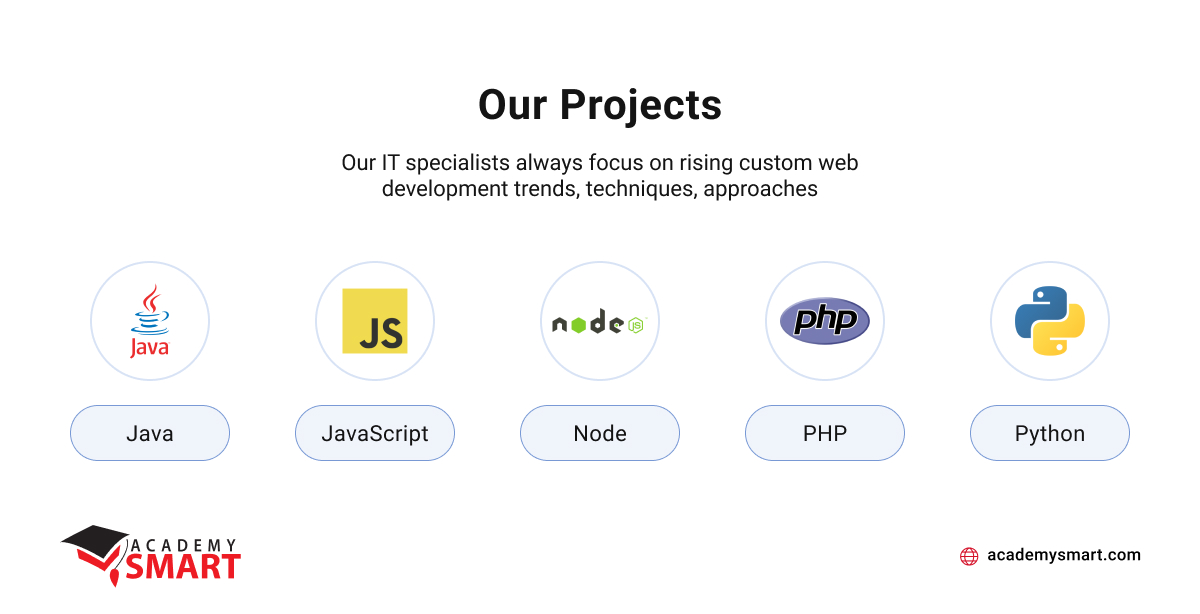
Various projects we delivered
Find a job in IT: Frequently Asked Questions
What are the two types of IT professionals?
The two main types of IT professionals are technical IT specialists, who focus on designing, developing, implementing, and managing technology infrastructure, and non-technical IT experts, who specialize in roles like project management, business analysis, and IT consulting without directly working on technical systems.
What type of IT degree is best?
Computer science or software engineering is often a foundation for various IT roles. Still, other degrees like information technology, cybersecurity, or data science may be more suitable for specific career paths within the IT industry.
Book a free consultation

Reach out to start talking today!

